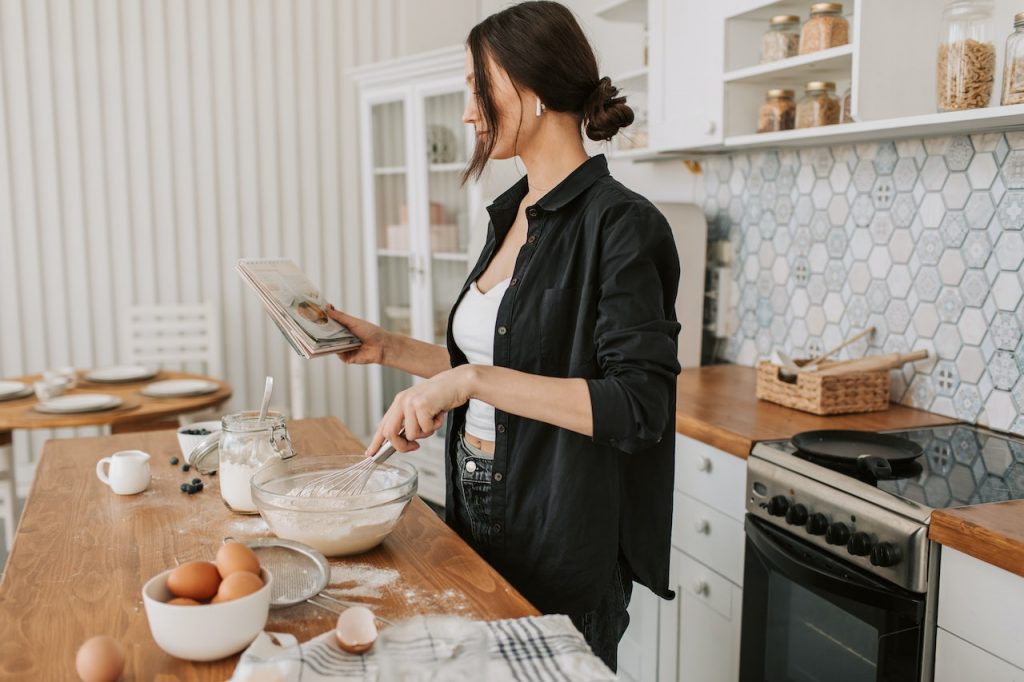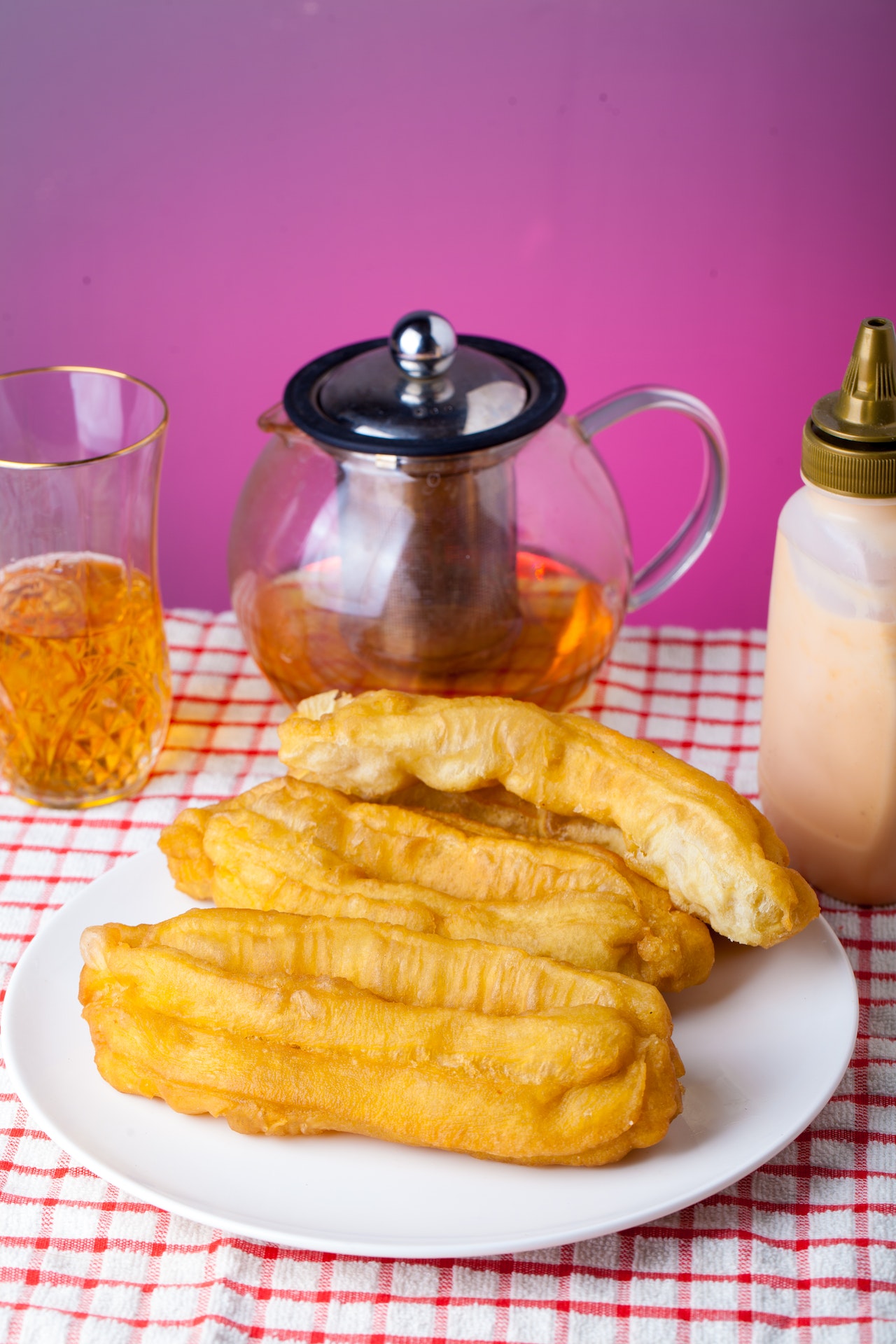Youtiao Recipe
Youtiao, which roughly translates to “oil strips” in Mandarin, are airy, golden fried sticks of dough. Youtiao is a type of pastry that is frequently consumed in China for breakfast with congee. They are also present in other East and Southeast Asian cuisines, though they go by different names, from Cambodia to Laos to the Philippines and Thailand.
The Cantonese dialect has a moniker that is even more fitting: yàuhjagwái, which means “oil-fried-devil” in English. I’m sure there is a complex old folktale hidden behind this bizarre moniker, but ultimately, Youtiao doesn’t require an introduction. They are so alluring that few people can resist them.
The finest Youtiao has a golden brown, puffy shell and a light, airy interior. Crisp on the surface and soft and fluffy inside. To achieve these features, Chinese chefs typically use a variety of specialized ingredients. Chinese chefs typically use a variety of unique ingredients to create these features. Chinese Cooking Demystified states that dried cuttlefish bones are utilized as a source of calcium carbonate because it is supposed to encourage puffing and delay browning, resulting in a crispier product. Chinese ammonium powder, a blend of baking soda and ammonium carbonate, an outmoded leavener noted for generating a crisp texture in crackers and other baked goods, is among the other ingredients. I tried both methods and they produced good Youtiao, but I discovered that the reward wasn’t worth the cost or the trouble of locating the ingredients. In addition to being difficult to find outside of China, dried cuttlefish bones don’t completely dissolve in water, making integration a less-than-smooth procedure. Second, if you don’t completely cook off the ammonium carbonate’s unpleasant, pungent odour, it lingers, and if you use too much, it can be distracting or even render the pastry inedible.
I discovered that a healthy quantity of baking powder worked just as well to produce that airy texture. I made sure to thoroughly knead the gluten in the beginning to guarantee that it would fully develop, as this would ensure that the dough would have the most capacity for expansion as it fried. I added an egg to add richness and some more structure.
Oil is frequently called for in recipes because it is believed to tenderize the inside and make the dough easier to handle. However, I discovered that it made my dough too loose and didn’t add much taste or richness. I decided to use butter instead, which not only added more flavour but also resulted in a dough that was easier to work with.
Another detail in making a perfect Youtiao is shaping: before frying, dough strips are layered together, pressed lengthwise in the centre with a chopstick, and stretched until doubled or tripled in length. When done properly, the pastry should have an open, airy crumb structure with occasionally cavernous holes that look like a butterfly when split in half.
Finally, it was discovered that high oil temperature and quick movement were key to maximizing puffiness. The ideal temperature for my recipe was between 390°F and 400°F; any lower or higher would cause the dough to puff less ferociously or the exterior to cook too quickly, preventing the pastry from reaching its maximum volume.
Ingredients
- 1/4 cup clean water
- 1 large egg
- 140g all-purpose flour
- ½ tablespoon baking powder
- ½ teaspoon salt
- 28g cold, unsalted butter, cut into 4 pieces
- 8 cups vegetable oil, for frying

Directions
- Whisk water and egg in a medium bowl until well blended and smooth. Flour, baking powder, and salt should all be completely incorporated in the bowl of a stand mixer, which should take around 30 seconds. Add the egg mixture and butter. Set bowl onto stand mixer, attach dough hook, and mix on low speed for three minutes, or until all liquids are absorbed and no dry flour is visible.
- Increasing the speed to medium-low, continue mixing for 10 to 12 minutes, or until the dough begins to pull away from the sides of the basin and the butter is completely integrated. Transfer the dough to a clean work area, knead for 30 seconds, and then form a 9-inch log. The log is pressed flat to a thickness of 3/4 inch. The log should be covered in plastic wrap and kept cold for up to 24 hours.
- Take the dough out of the refrigerator and let it sit at room temperature for 2 to 3 hours, ideally between 68°F (20°C) and 72°F (22°C). The dough is unwrapped and moved to a work area that has been lightly dusted with flour. Form a rectangle out of the dough that is 10 inches by 6 inches. Divide the dough into ten 1-inch by 6-inch strips using a bench knife or pizza cutter. Wrap a wet paper towel loosely around the dough. In the meantime, heat oil in a Dutch oven over medium-high heat until an instant-read thermometer reads 400°F (204°C); increase the heat as necessary to maintain this frying temperature. Have salt (and/or other seasonings) nearby, a spider or chopsticks, and a wire rack set up on a baking sheet with a rim.
- Cut the strip in half crosswise to create two 3-inch strips, working with one strip at a time. One 3-inch strip with the un-floured top side should be briefly wetted before the second 3-inch strip is layered on top, unfloured side down. To securely seal the strips together and create a groove, place a chopstick lengthwise down the centre of the layered dough strip. Repeat with the remaining dough strips, then cover loosely with plastic wrap. Ten minutes should be given for the dough strips to rest.
- Hold both ends of the dough and stretch to 8 to 10 inches in length, working with one dough strip at a time. Lower the dough carefully into the heated oil, gently laying the strip away from you, then immediately stretch the second strip of dough and carefully add it to the oil. Cook for about 10 seconds, or until the dough sticks begin to float. Cook for 10 to 15 seconds longer after flipping dough sticks with chopsticks or a slotted spoon, then continue flipping dough sticks in 10- to 15-second intervals until the dough is puffed and golden brown, about 90 seconds total. Transfer the fried dough to a wire rack set on a rimmed baking sheet using a spider. Sprinkle with salt. Return the oil to 400°F and repeat with the remaining dough. Serve immediately.

